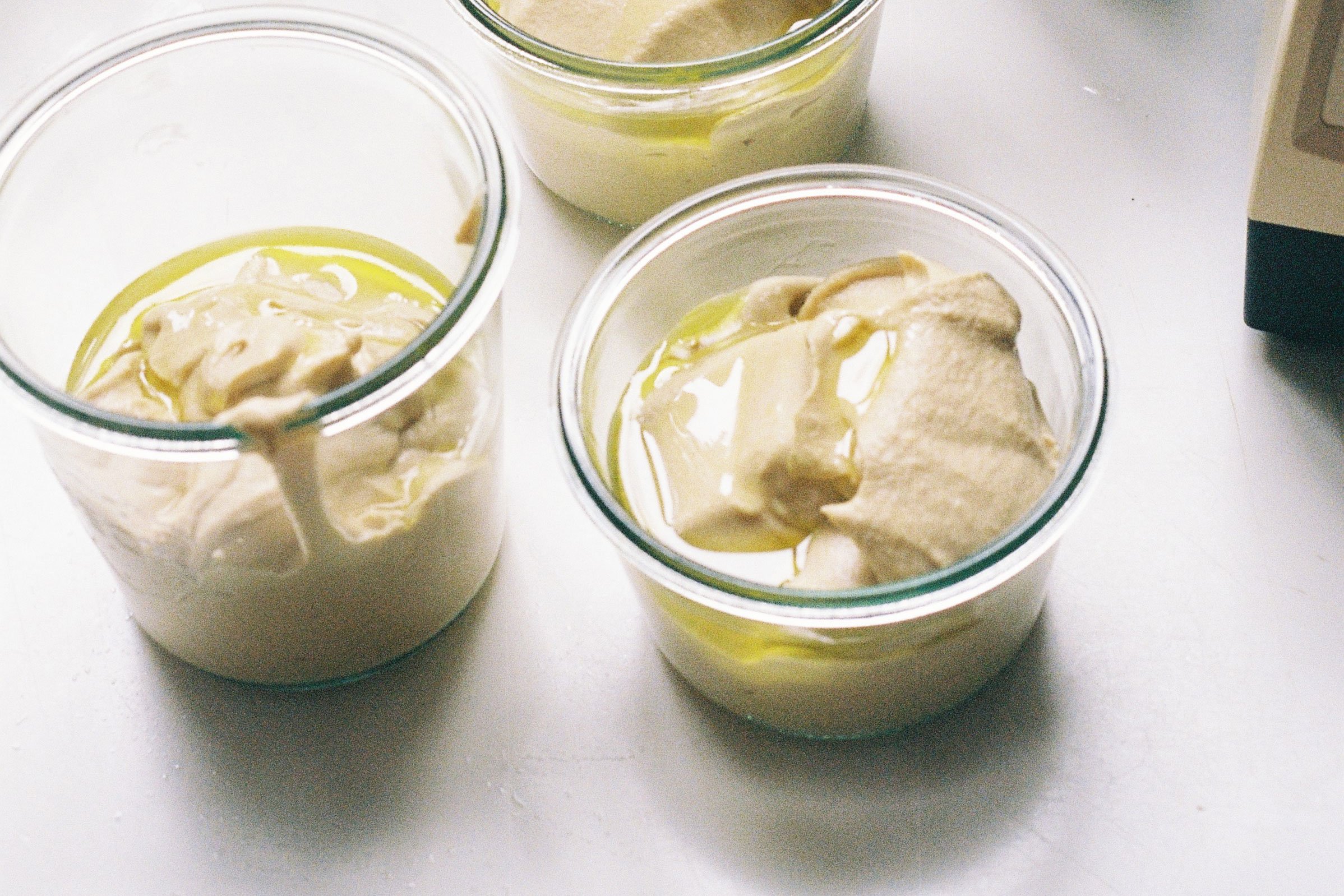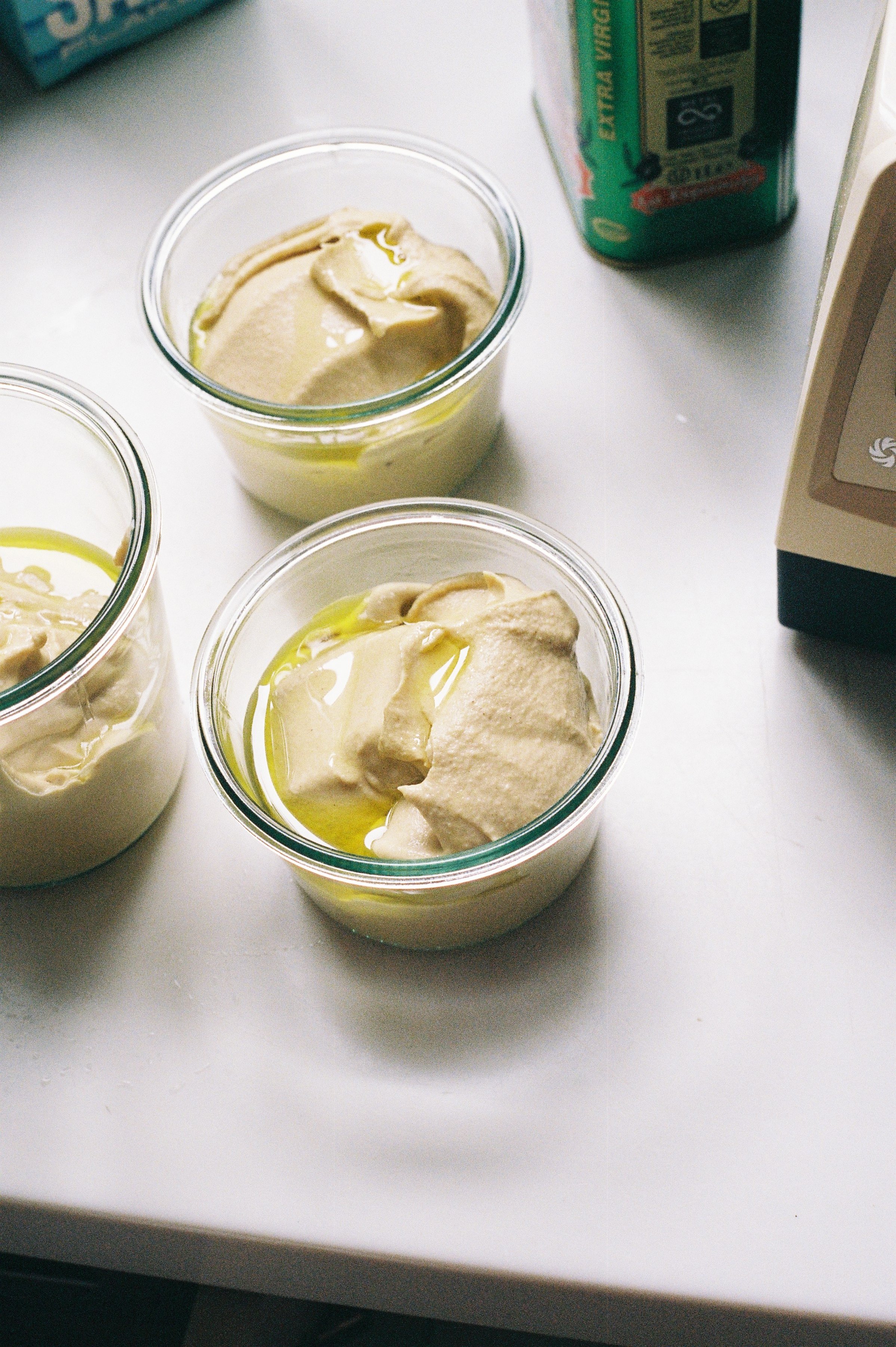Method
To get started, place chickpeas and 1 teaspoon of bicarbonate of soda in jar or bowl, cover with cold filtered water and let sit overnight — 8–12 hours. Drain and rinse.
Combine soaked chickpeas and remaining 1 teaspoon of bicarbonate of soda in a large pot, cover with cold filtered water. Bring to the boil, skimming surface as needed. Reduce heat to medium-low, partially cover, and simmer until chickpeas are super tender and the skins remove very easily — 45–60 minutes. Drain.
Blend the garlic, lemon juice, and 1 teaspoon of salt in a food processor or blender until kind of foamy. Let sit, the garlic will mellow out. Strain, removing as much liquid as possible. You’ll use this. Set aside the remaining solid garlic, you can use this for cooking.
Add the garlic and lemon liquid to your blender with the tahini and pulse to combine. With the motor running, add the iced water, processing until mixture is very smooth, pale, and thick. Add the chickpeas and cumin and process, occasionally scraping down sides, until mixture is extremely smooth. To thin, add ice cubes, start with a few and if needed, add the rest. Season to taste with salt, more lemon juice, and more cumin as desired.
Store in an airtight container. Your hummus will keep for up to one week in the fridge.


